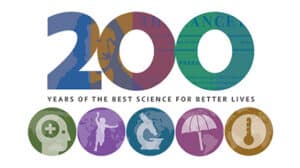Blockchain’s global market value nearly tripled between 2018 and 2021 – from USD 1.57 billion to USD 4.67 billion. As health and tech intertwine, blockchain is proving to be a game-changer in ensuring healthcare delivery
For the majority of 2022, blockchain has been in the news primarily due to its connection to cryptocurrencies, which are experiencing a sharp decline in their value. But the blockchain is not just about cryptocurrencies. Touted as a solution to virtually every problem known to mankind, blockchain has been a tech disruptor in every industry since 2008.
HealthLEADS looks beyond the buzzword to assess its impact on global healthcare.
Wait, isn’t Bitcoin the same as blockchain?
It isn’t. Bitcoin, and other cryptocurrencies, are just one example of blockchain. It is the underlying technology that enables bitcoin, similar to how liquid oxygen can power a rocket or support critical care in hospitals. Bitcoin isn’t blockchain, just as a rocket isn’t liquid oxygen.
So then, what exactly is it?
Simply put, blockchain is digital record-keeping across a shared network, where each entry is recorded as the next ‘block’ in the ‘chain’. It relies on decentralisation and cryptography to ensure security and scalability. These ‘blocks’ can be used to record or track anything of value – from medical records to supply chain transactions. In the case of cryptocurrencies, these entries are financial transactions. The information in the blocks along the chain is secure as the digital registry is stored across various networks. Any new information, or change to previous information, can only be done by the addition of a block to the chain. It thus becomes a method of storing data that makes it difficult or impossible to change, hack, or manipulate the system.
And how is it useful in healthcare?
The Economist in a 2015 article called blockchain as “the trust machine” that can help eliminate falsification and fraud through tamper-proof information records. Being decentralised and secure means blockchain can be applied to the medical industry in a number of ways. Here are a few exciting ones that will be crucial, if they aren’t already.
Electronic Health Records
One of the most popular applications is Electronic Health Records (EHR). Traditionally just a digital version of patient charts, EHRs have long been dictated and constrained by compliance. A whitepaper published in 2016 said, “EHRs were never designed to manage multi-institutional, life time medical records.” A blockchain based alternative would be to store patient records and data across a network of hospitals and organisations. This brings in the much-needed level of interoperability, which also improves clinical decision making while maintaining data security.
Supply chains and logistics
Blockchain brings in the transparency needed to enable secure tracking of goods such as medicines, vaccines, and medical equipment. Sensors on packages can also help track, monitor, and log transport conditions such as storage temperature and location, all automatically.
Healthcare Internet of Things (IoT)
Wearables such as blood glucose monitors, home scales, and health apps generate what is called patient-generated health data (PGHD). The healthcare IoT plays a key role in collecting, analysing, and utilising PGHD, which has massive potential for enhancing clinical care. But it is often unstandardised and poorly defined, a problem complicated further by the large swaths of PGHD. Using blockchain, all devices would be accessing up-to-date information simultaneously, while alleviating data security concerns otherwise common to conventional data models.
Cross-industry use cases
Complex contract negotiations, insurance settlements, document identification and verification are some of the cross-industry use cases of blockchain that find significant relevance in the healthcare industry.
Who’s doing what with blockchain in healthcare?
Although blockchain has been around for over a decade, the tech has picked pace in recent years, with the COVID-19 pandemic only further accelerating the growth. The need for secure, contactless, solutions to the pandemic brought blockchain right into play.
In early 2020, blockchain tech was tested for contact tracing in South Korea. Later that year, UNICEF endorsed an Indian blockchain startup called StaTwig for its solution to safeguard vaccine distribution around the world. American multinational tech giant IBM also stepped into the game with a tool to identify trusted companies to deliver safe and high-quality PPE, and then one for trusted vaccine distribution. Finnish scientists have also come up with a blockchain based COVID vaccine verification system – the vaccine passports.
There was activity in blockchain healthcare tech before the pandemic as well. US companies such as BurstIQ and Patientory have worked on blockchain-enabled solutions for the healthcare industry for several years now, and currently stand strong with multi million dollar valuations.
Hype or reality?
A 2021 World Bank article raised concerns over the trust gap in blockchain. The Anti Corruption Resource Centre of Chr. Michelsen Institute explored the pandemic-driven blockchain tech evolution, and why much of it hasn’t seen widespread adoption or deployment. Although one reason for this is the rapidly shifting nature of the pandemic, another is the lack of national regulations in many countries to support blockchain technologies. Experts say that blockchain is still in its early stages, and will need to overcome serious technical and regulatory challenges if it is to achieve widespread adoption.
The global blockchain market value has nearly tripled between 2018 and 2021 – from USD 1.57 billion to USD 4.67 billion. Perhaps the pandemic has pushed blockchain through the “trough of disillusionment” in Gartner’s hype cycle, and the technology may now be entering a productive period. As with any innovation, the introduction of blockchain in healthcare offers promise of a transformative change laced with some caution.

















